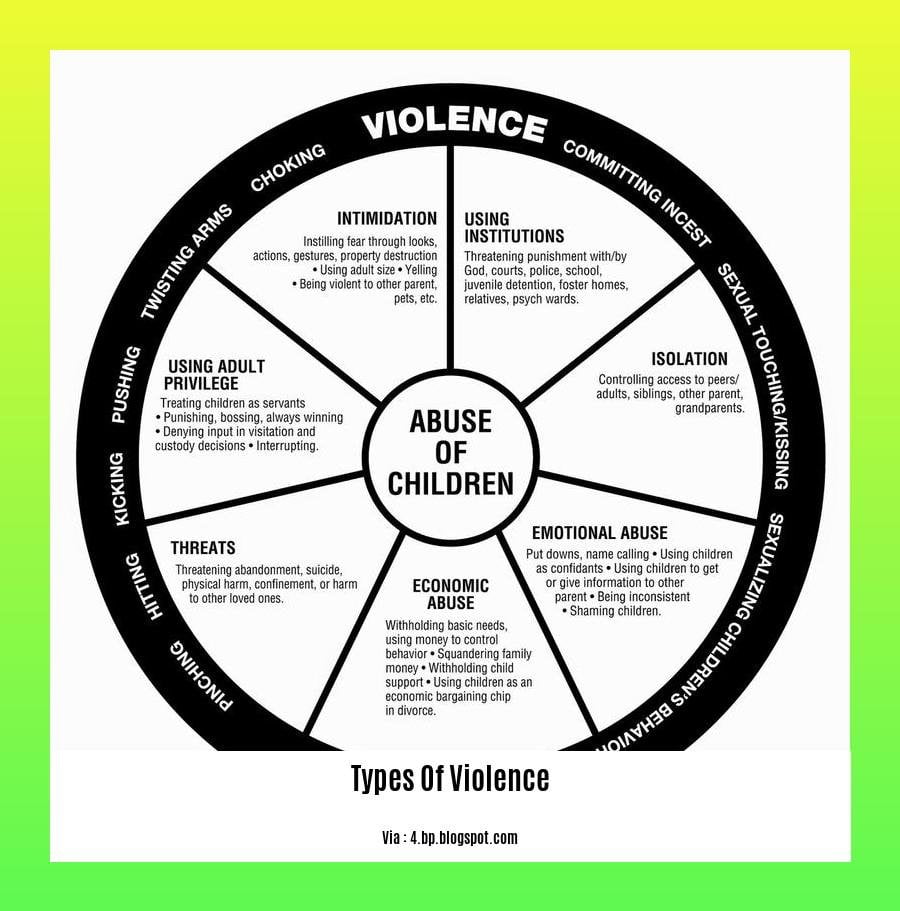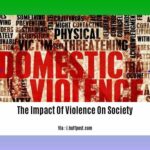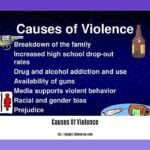In this comprehensive exploration, we delve into the devastating impact of different types of violence. From physical assault and domestic abuse to hate crimes and mass shootings, the consequences of violence reverberate through individuals, communities, and society as a whole.
Key Takeaways:
- Violence manifests in various forms: physical, psychological, sexual, economic, etc.
- Its impact extends beyond individuals: it affects communities, disrupts economies, and undermines social cohesion.
- The root causes of violence are complex: poverty, inequality, discrimination, and social norms play a role.
- Understanding different types of violence is crucial: it empowers individuals and organizations to address it effectively.
- Prevention and intervention strategies should target both individual and societal factors contributing to violence.
- Collaboration and awareness are vital: addressing violence requires collective efforts from governments, communities, and individuals.
Types of Violence
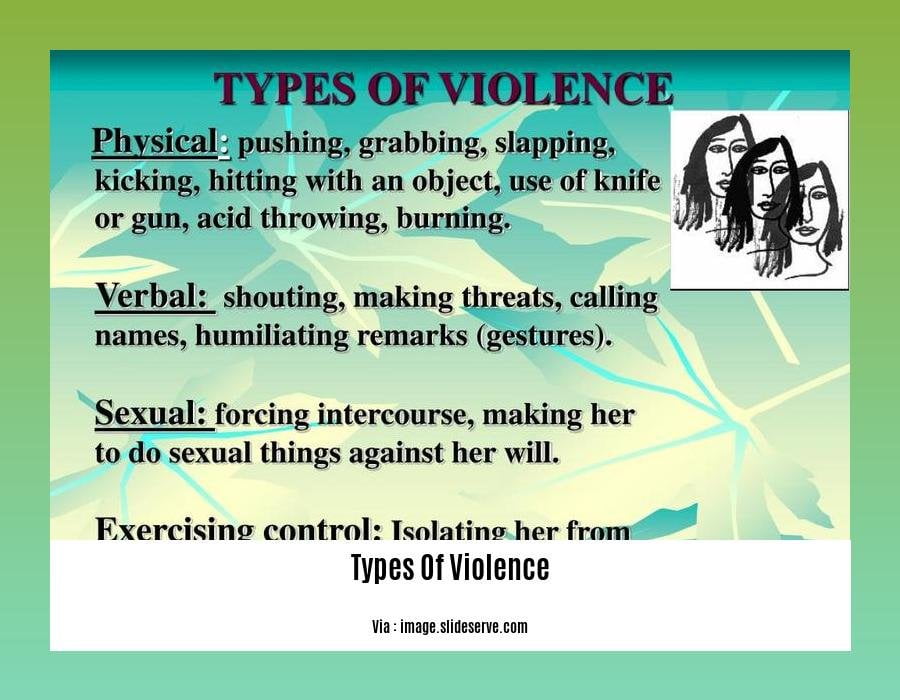
Violence, in all its forms, is a prevalent issue that seeps into our homes, schools, communities, and society at large. Understanding the diverse types of violence is paramount to addressing its root causes and devastating impacts.
Physical Violence: The Tangible Toll
Physical violence leaves harrowing, visible scars. It involves the deliberate use of force resulting in bodily harm, including assault, battery, and domestic violence. The consequences are often physical disfigurement, pain, and even death.
Psychological Violence: The Invisible Wounds
Psychological violence inflicts wounds that are often harder to spot. It employs emotional manipulation, threats, and intimidation to inflict mental anguish. Harassment, gaslighting, and verbal abuse are examples of this insidious form. The lasting effects can include anxiety, depression, and eroded self-esteem.
Sexual Violence: A Profound Violation
Sexual violence is any unwanted sexual act and encompasses rape, assault, and molestation. It not only causes physical injury but also deep emotional trauma, fear, and a sense of violated autonomy.
Domestic Violence: A Pattern of Control
Domestic violence is a pervasive pattern of physical, psychological, sexual, and economic abuse within a relationship. It is often characterized by a cycle of violence and control, leaving victims isolated and vulnerable.
Cyber Violence: Digital Aggression
With the advent of technology, cyber violence has emerged as a new threat. It involves the use of technology to inflict harm, such as cyberbullying, online harassment, and identity theft. The psychological distress and reputational damage caused by cyber violence can be severe.
Conclusion
The types of violence are multifaceted and have varying degrees of severity. Understanding these complexities is vital for developing effective prevention strategies, supporting victims, and fostering a society free from the scourge of violence.
Violence has a long and complex history of violence. It can be caused by a variety of factors, including poverty, inequality, and discrimination. Violence can have a devastating impact on individuals, families, and communities. It can lead to physical and psychological harm, as well as social and economic problems. To learn more about the causes of violence, click on the causes of violence link. To learn more about the impact of violence on society, click on the the impact of violence on society link.
Sexual Violence
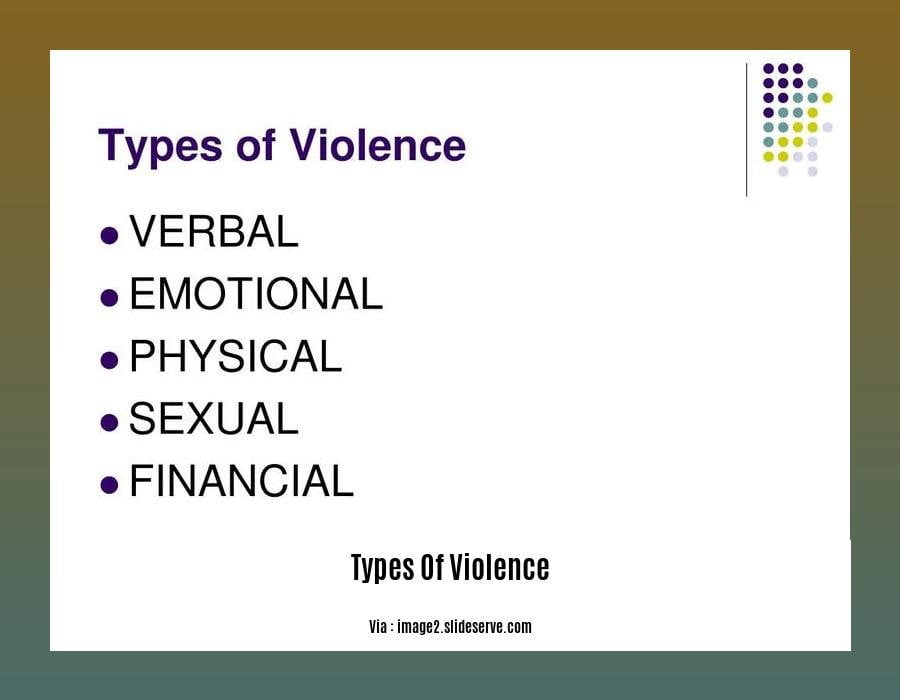
Let’s take a closer look at the different types of violence that exist in our world. Understanding the different forms of violence, including sexual violence, is crucial for recognizing its impact and working towards its prevention.
Types of Sexual Violence
Sexual violence encompasses any sexual act, attempt, or other act directed against a person’s sexuality using coercion (WHO). Sexual violence can manifest itself in various forms:
- Sexual assault: Non-consensual sexual contact involving force or the threat of force.
- Child sexual abuse: Sexual activity with a minor (under 18 years old).
- Sexual assault of men and boys: Sexual violence perpetrated against males of all ages.
- Intimate partner sexual violence: Sexual abuse or exploitation within a romantic relationship.
- Drug-facilitated sexual assault: Use of drugs or alcohol to incapacitate a victim before committing sexual violence.
Consequences of Sexual Violence
Sexual violence has profound consequences for individuals and communities.
- Physical: Injuries, sexually transmitted infections, and pregnancy.
- Psychological: Trauma, depression, anxiety, and post-traumatic stress disorder.
- Financial: Loss of income, medical expenses, and legal fees.
- Legal: Criminal charges and civil lawsuits.
- Spiritual: loss of self-esteem, trust, and sense of safety
Prevalence and Perpetrators
Sexual violence is a prevalent issue globally. In Australia alone, over 1 in 5 women have experienced sexual violence since age 15 (AIHW). Perpetrators can be anyone, regardless of their relationship to the victim.
Key Takeaways:
- Sexual violence is a serious issue with long-lasting impacts on victims and communities.
- It takes many forms, including sexual assault, child sexual abuse, and intimate partner sexual violence.
- Sexual violence has physical, psychological, financial, legal, and spiritual consequences.
- Understanding the different types of violence and their consequences is crucial for prevention and response.
Domestic Violence
Ever found yourself in a situation where the love of your life turns into your biggest fear? Where your home, your supposed safe haven, becomes the battlefield of abuse? That, my friend, is the terrifying reality of Domestic Violence.
Physical Abuse
Bruises, broken bones, cuts… when love hurts… it hurts. Physical abuse is any intentional use of physical force that results in bodily harm.
Verbal Abuse
Words can cut deeper than knives. Name-calling, insults, humiliation… verbal abuse can chip away at your self-esteem, making you question your own worth.
Sexual Abuse
Forced sex, unwanted sexual advances, sexual humiliation… sexual abuse is a violation of your body and soul. It robs you of your dignity and sense of safety.
Emotional Abuse
Gaslighting, isolation, control… emotional abuse is a twisted game that plays with your mind. It can make you feel worthless and dependent on your abuser.
Financial Abuse
Controlling your money, preventing you from working, limiting your access to resources… financial abuse is a way to exert power and keep you trapped.
Key Takeaways:
- Domestic Violence is a pattern of abuse that can take many forms, including physical, verbal, sexual, emotional, and financial.
- It’s never the victim’s fault.
- Breaking the cycle of Domestic Violence requires support, resources, and courage.
Source: National Coalition Against Domestic Violence
Cyber Violence
Cyber Violence harm inflicted by using technology to inflict cyber-violence, including threats, stalking, location tracking, and harassment. This phenomenon is prevalent in society.
There are various forms of violence, and cyber violence is one of the increasing concerns. It is a type of violence that occurs in the online world. Cyber violence takes many forms, including:
- Cyberbullying: The use of electronic devices to bully or harass someone.
- Online harassment: The use of electronic devices to harass or threaten someone.
- Identity theft: The use of someone’s personal information without their consent to commit fraud or other crimes.
- Malware attacks: The use of malicious software to damage or disable someone’s computer or other electronic devices.
Cyber violence can have a devastating impact on victims. It can cause emotional distress, loss of privacy, and damage to reputation. Victims of cyber violence may also experience physical and financial harm.
Key Takeaways:
– Cyber Violence can take various forms like cyberbullying, harassment, etc.
– It’s dangerous and can impact individuals’ physical and mental health.
– By understanding the different types of Cyber Violence, we can work towards preventing and combating it.
Citation:
Council of Europe
FAQ
Q1: What are the main types of violence?
A1: Violence can manifest in various forms, including physical, psychological, sexual, economic, corporeal, poignant, psychosomatic, religious, civilizing, monetary, self-directed, collective, and interpersonal violence.
Q2: What is sexual violence and what are its different forms?
A2: Sexual violence encompasses any sexual act or attempt thereof using coercion. It includes sexual assault, child sexual abuse, sexual assault of men and boys, intimate partner sexual violence, and drug-facilitated sexual assault.
Q3: What are the different forms of domestic violence?
A3: Domestic violence encompasses various types of abuse within a household setting, including physical, verbal or nonverbal, sexual, stalking or cyberstalking, economic or financial, spiritual, digital or online abuse, and isolation.
Q4: What are the key characteristics of cyber-violence?
A4: Cyber-violence is a pattern of abuse using digital technology, such as threatening phone calls, cyber-stalking, location tracking, harassment on social media, and dissemination of intimate images without consent.
Q5: What is the impact of violence on individuals and communities?
A5: Violence has severe consequences on individuals, including physical injuries, psychological trauma, financial burdens, and social isolation. It also negatively impacts communities, creating an environment of fear, distrust, and diminished well-being.
- Unlock Water’s Symbolism: A Cross-Cultural Exploration - April 20, 2025
- Identify Black and White Snakes: Venomous or Harmless? - April 20, 2025
- Unlocking Potential: Origins High School’s NYC Story - April 20, 2025
